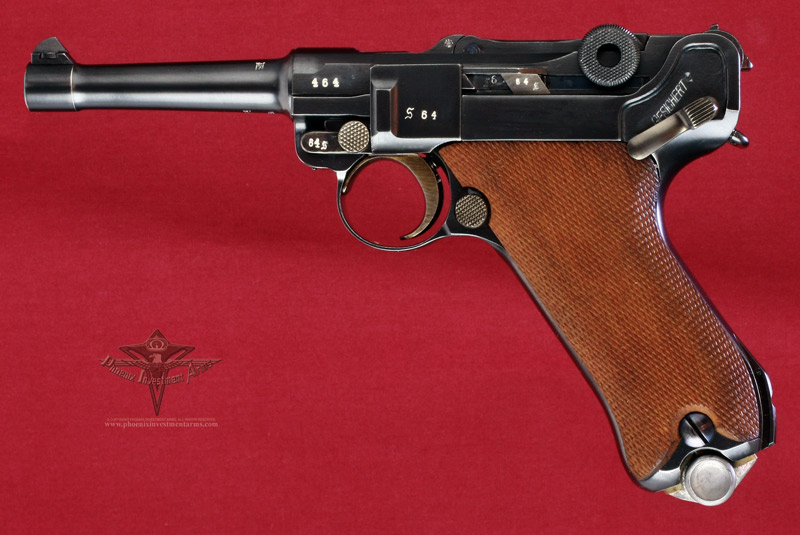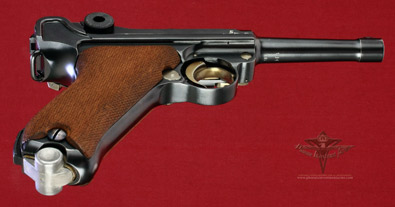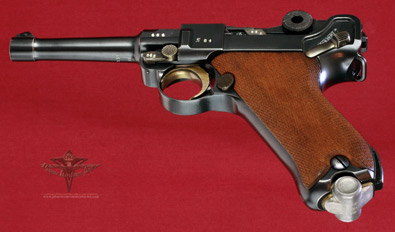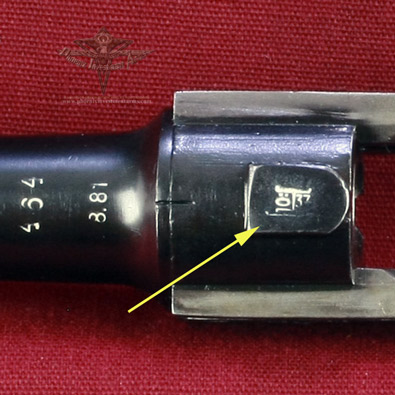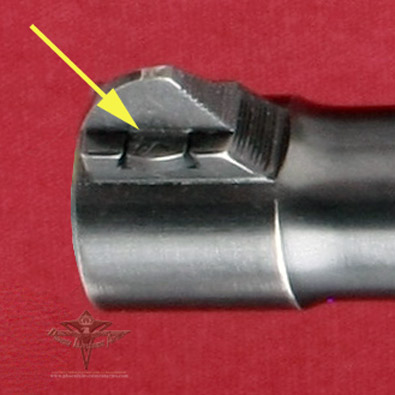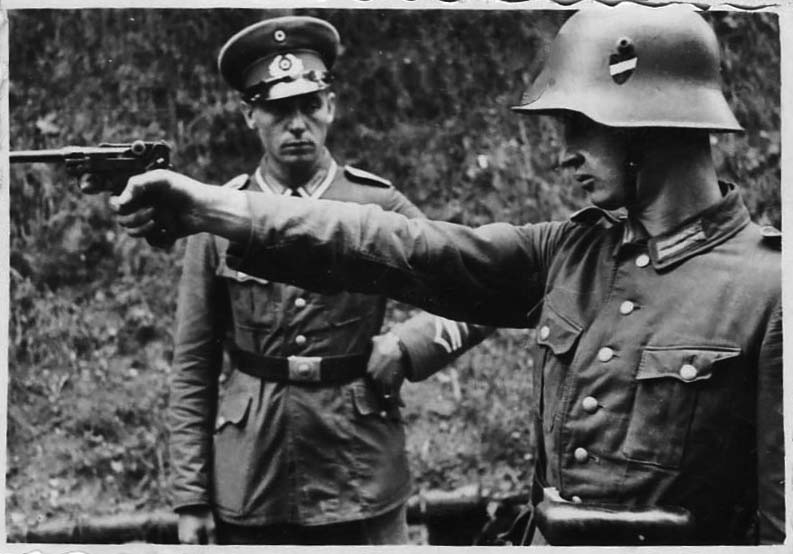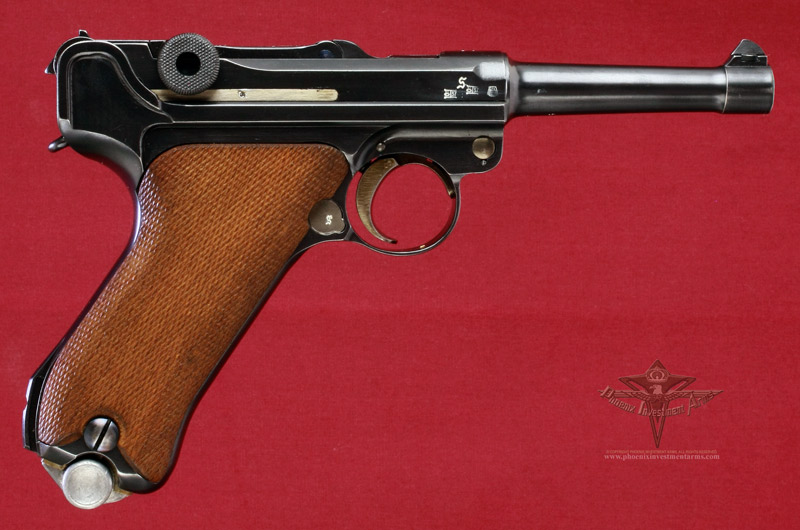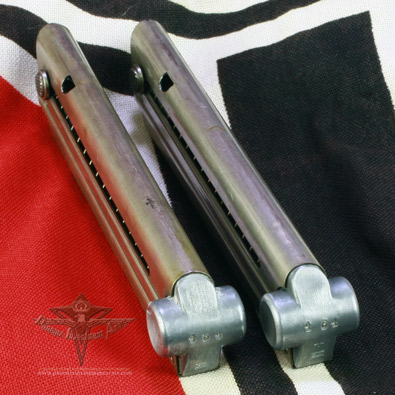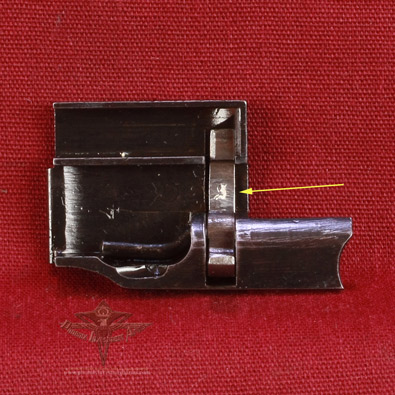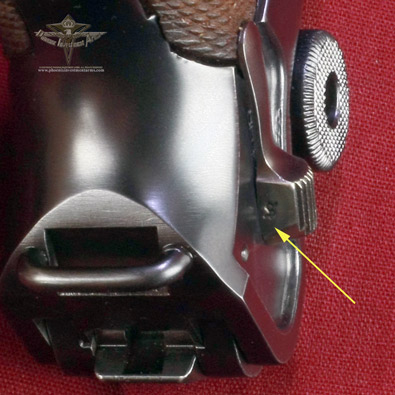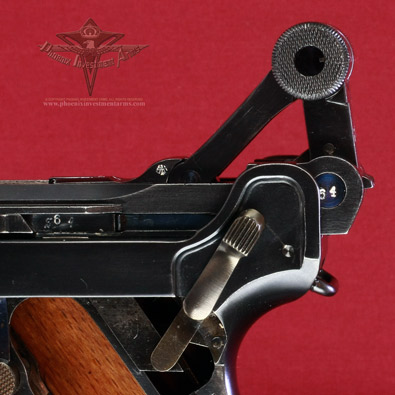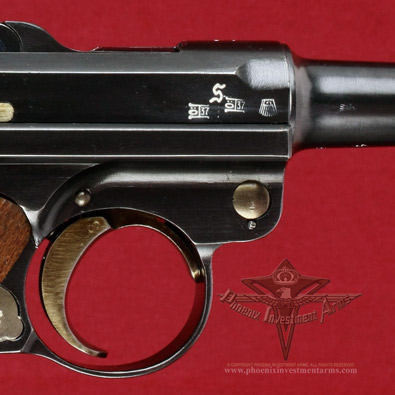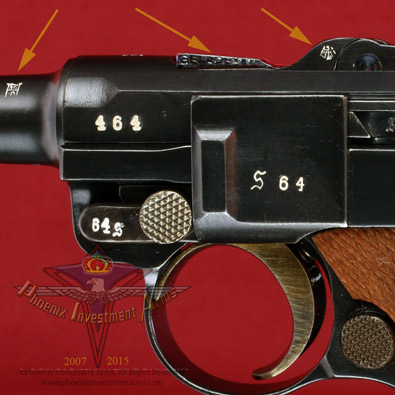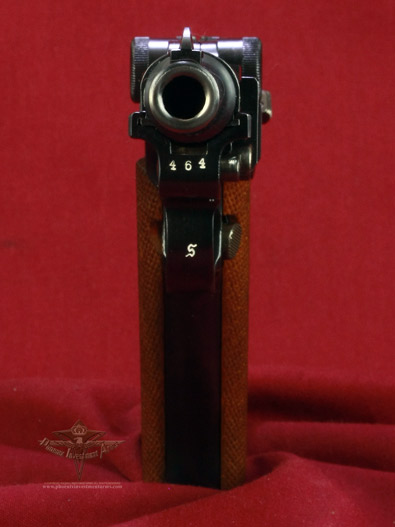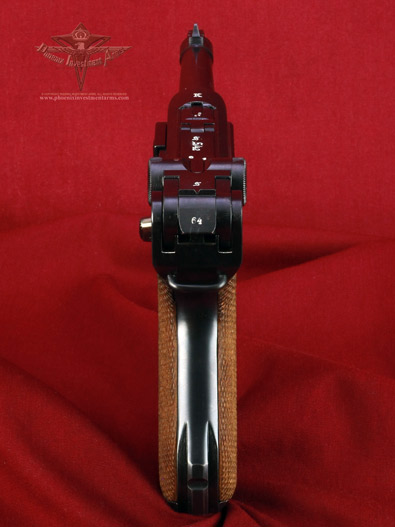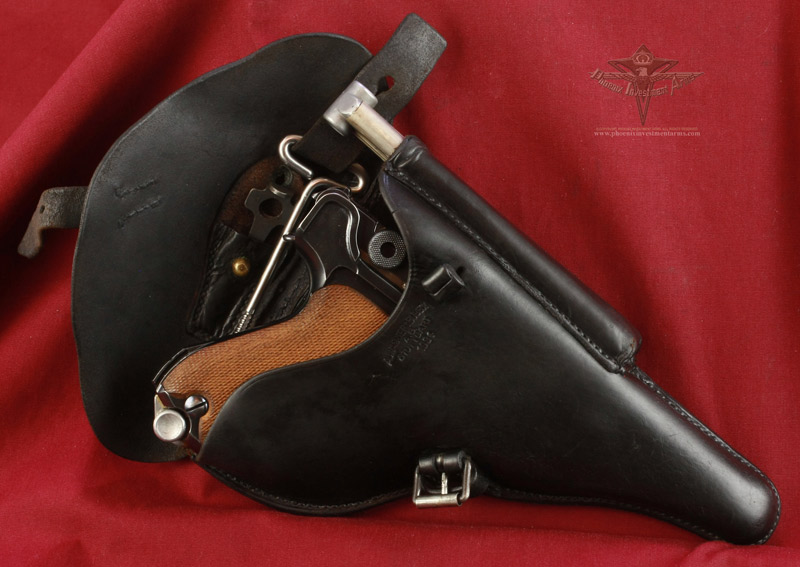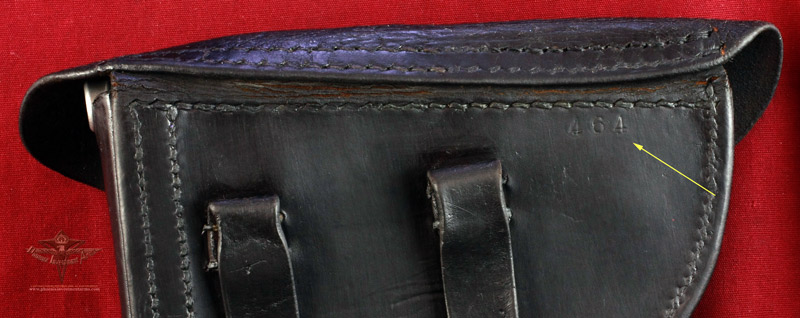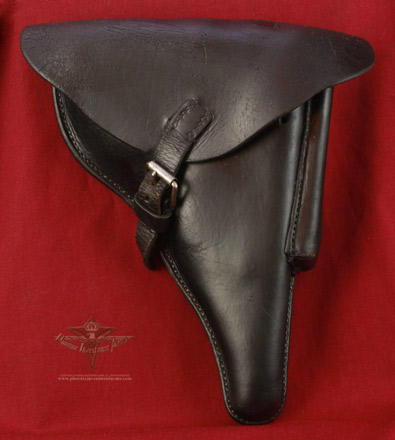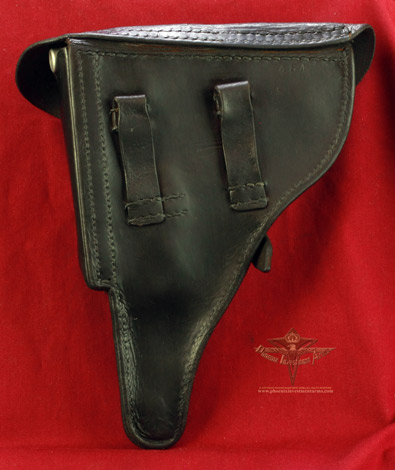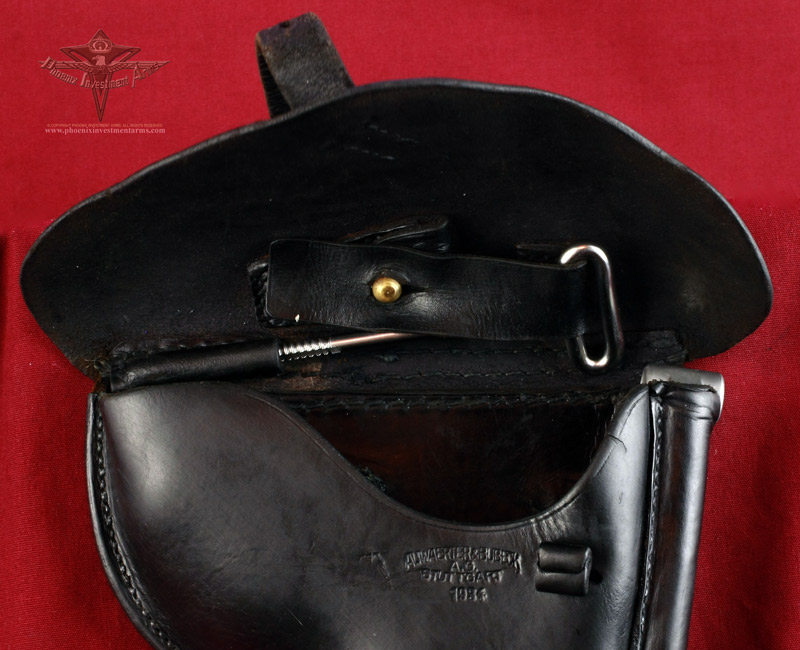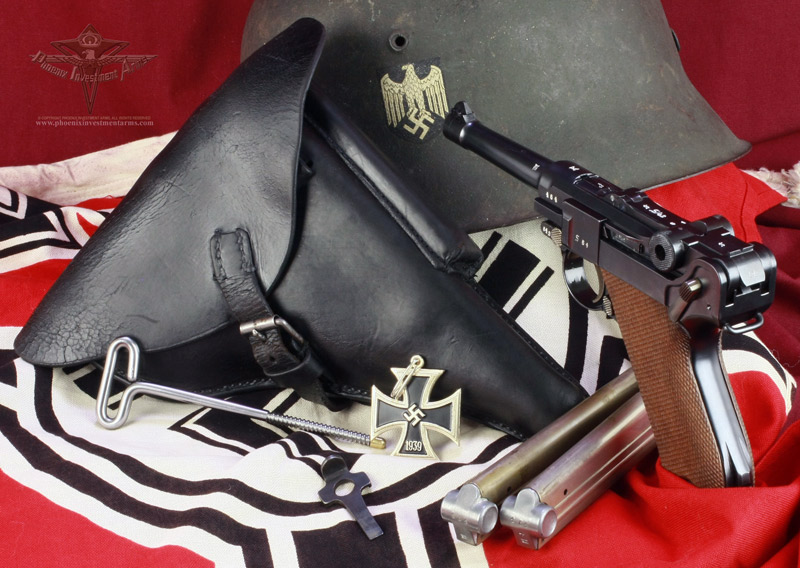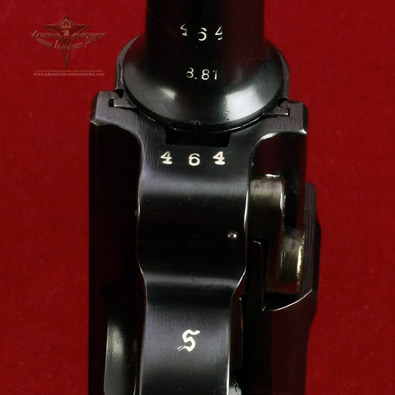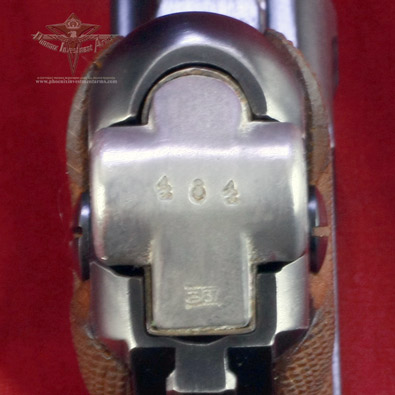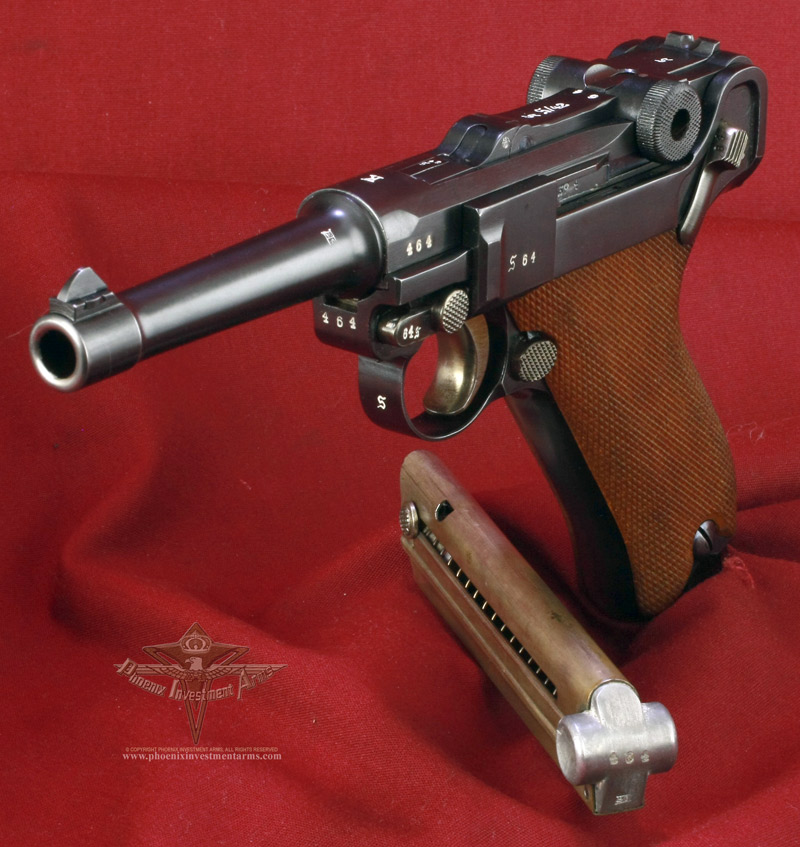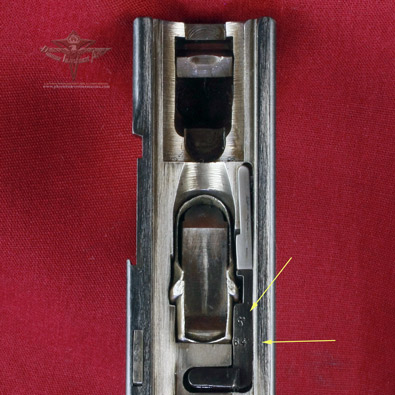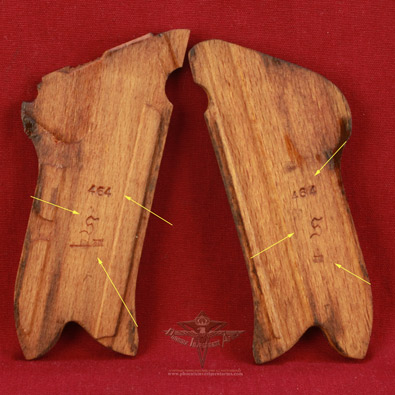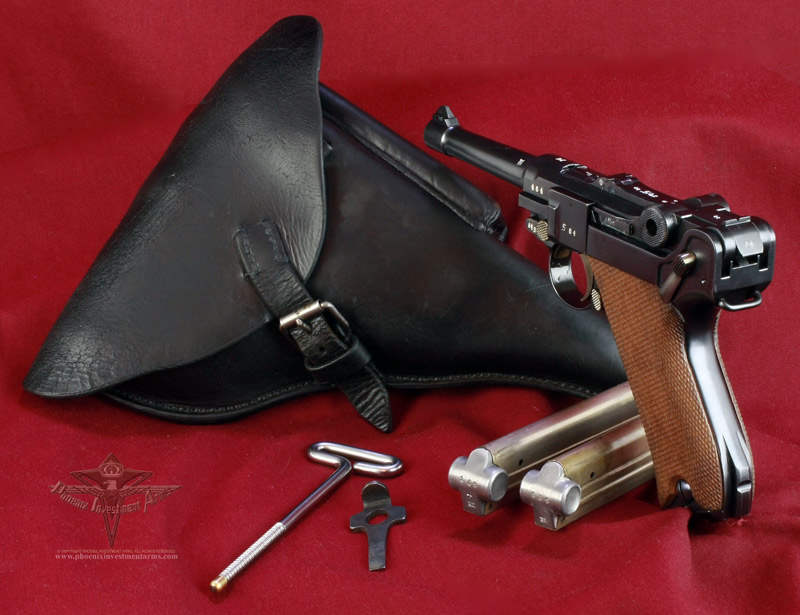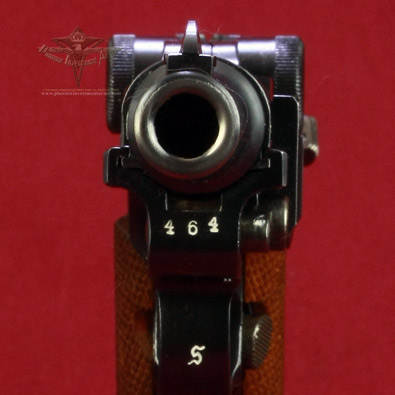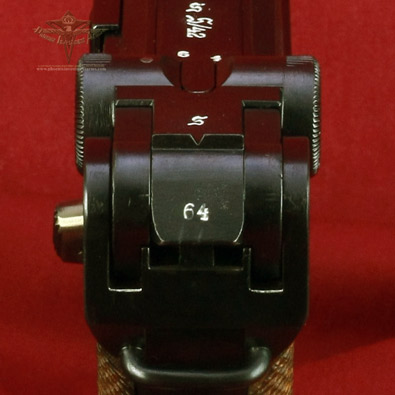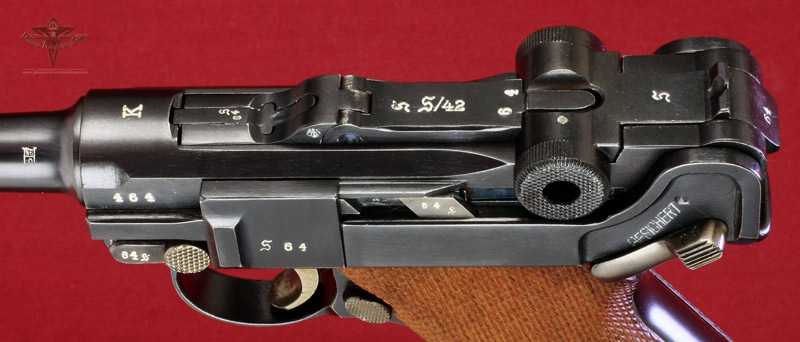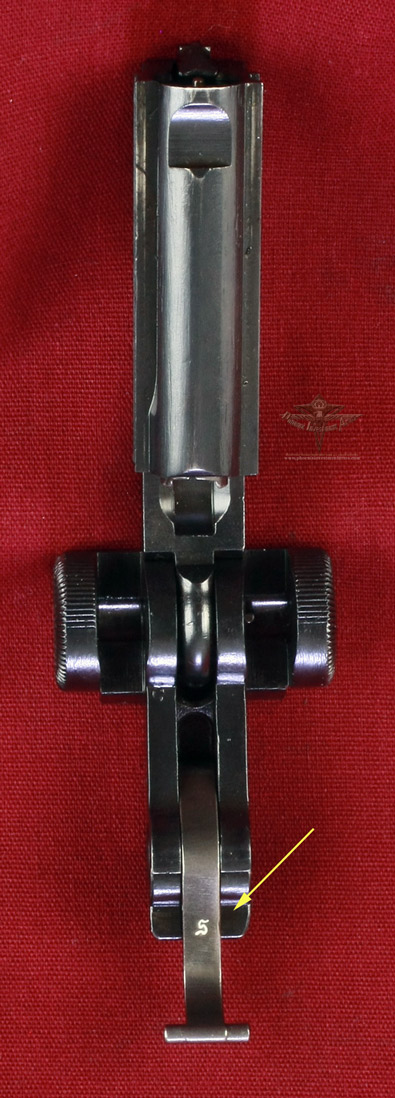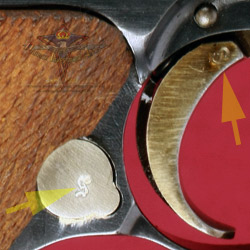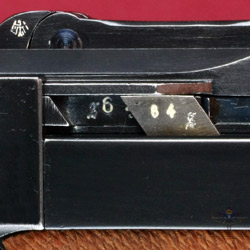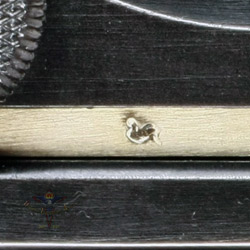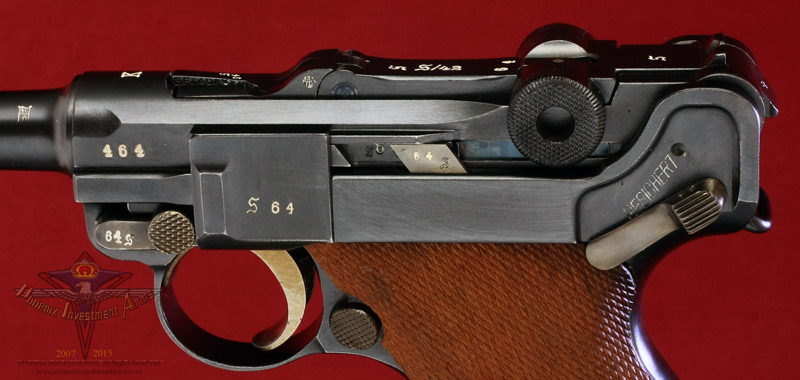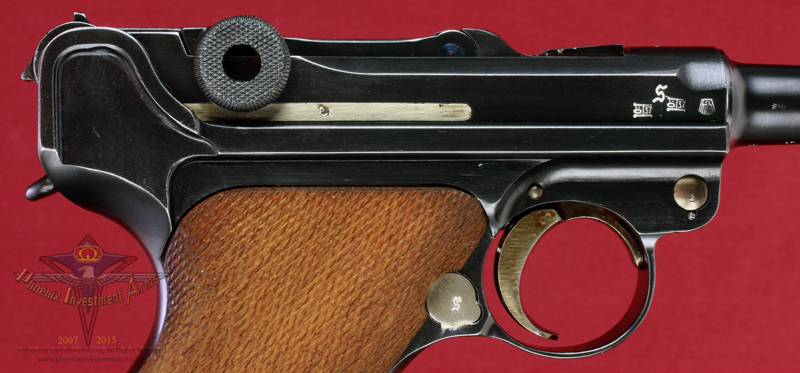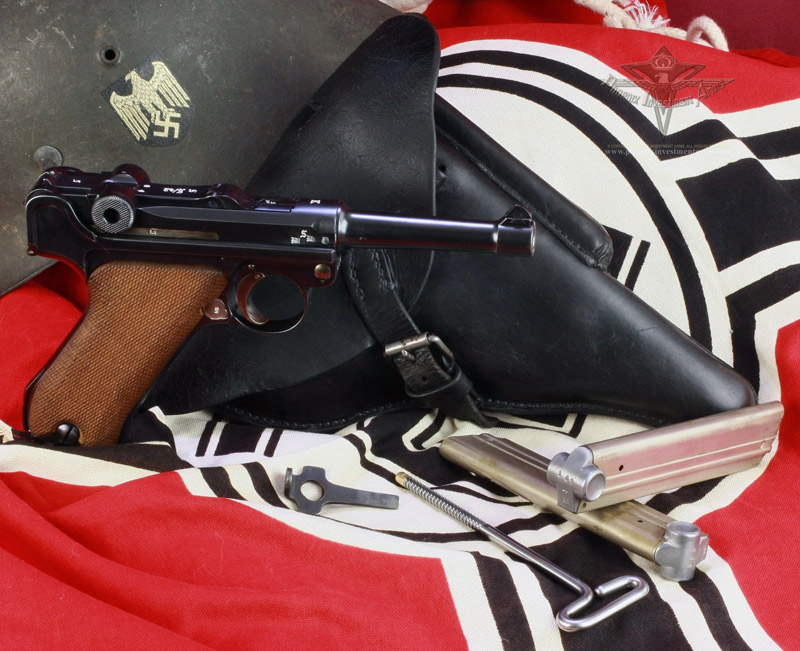1934 K-Date Mauser S/42 Rig
PHOENIX INVESTMENT ARMS -
PREMIUM COLLECTOR LUGERS
Genuine German
Luger - Largest Variety of Lugers Offered
Home | Post WWI DWM | Erfurt Lugers | Mauser | Simson Suhl | Krieghoff | Vickers | Swiss Bern | Other Guns
Bottom of Page
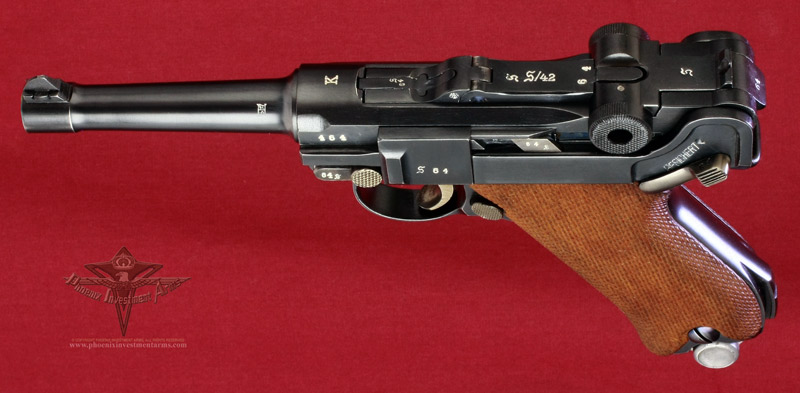 |
|
This is a 1934 Pistole 08 military Parabellum manufactured by Mauser. As a K-Date this is one of first military contract Lugers produced by Mauser. This Luger is a 4 inch (100mm) 9mm Parabellum. To conceal production a series of alphabetical dates were assigned in addition to the code on the toggle S/42 (Mauser). ''K" dates are representative of the Lugers produced in 1934; this is an all-matching gun including two magazines and a serial numbered holster along with a cleaning rod and loading tool. (2111) |
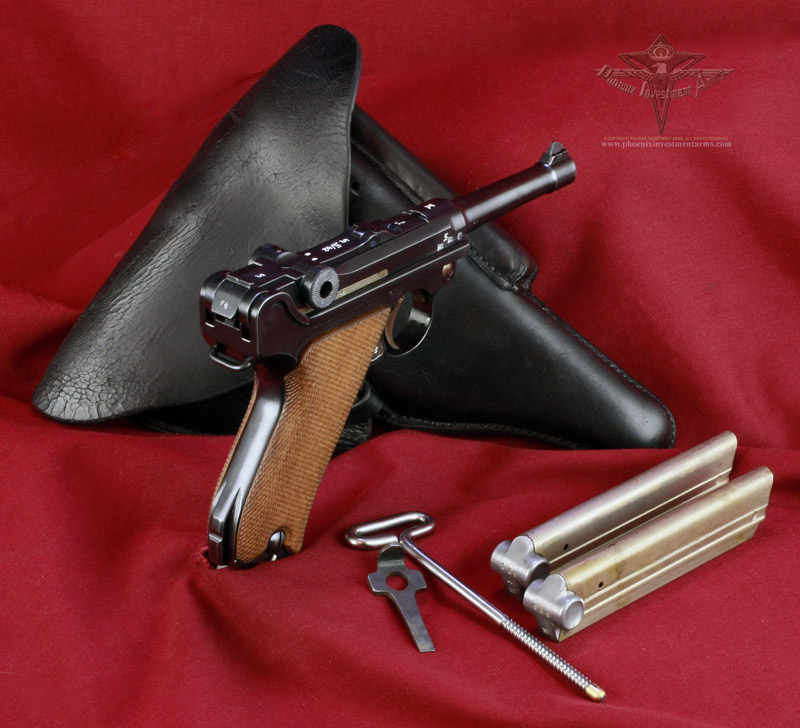 |
|
NOTE: Photographs taken today with the high mega-pixel camera show more than we sometimes can see with the human eye. Magnified close-ups show us tool marks and natural surface conditions that one normally doesn't see in the ordinary handling of the weapon. Photographs are copyrighted, all rights reserved, any extraction, reproduction or display of gun pictures without the express consent of the Phoenix Investment Arms is strictly prohibited. Thank you for your cooperation. Please see "Legal" for terms of sale. |
